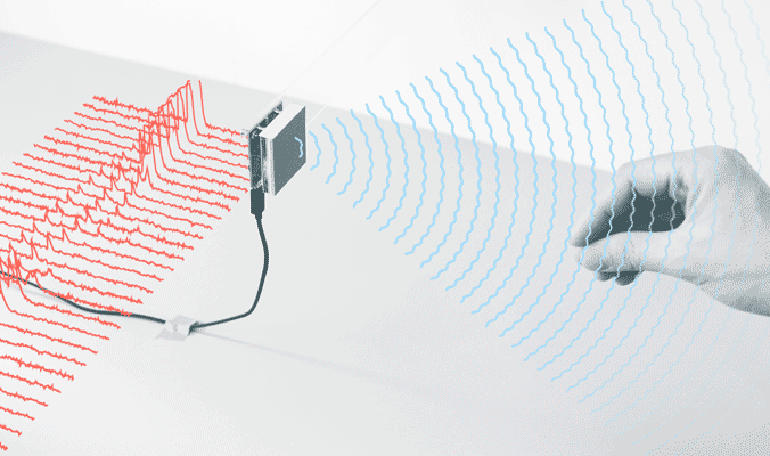Google has gained a waiver from the Federal Communications Commission (FCC) to operate its radar-based Soli sensors at higher power levels than currently allowed and to use them on airplanes.
Google’s Soli ‘field-disturbance sensors’ promise a new way of interacting with devices by using fine finger gestures, allowing users to control virtual buttons, dials and sliders on their hands.
Google unveiled the technology at its 2015 IO conference. Soli was developed by Google’s Advanced Technology and Projects (ATAP).
Google says while the controls are virtual, the sensors can generate feedback by the haptic sensation of fingers touching each other. The chip can be embedded in wearables, phones, computers, cars, and IoT devices.
The FCC offered Google the waiver after finding the Soli sensors “pose minimal potential of causing harmful interference to other spectrum users and uses of the 57-64GHz frequency band”. It also ruled that Soli will “serve the public interest by providing for innovative device control features using touchless hand-gesture technology”.
Google sought the waiver to operate its Soli radar at 57-64GHz at power levels that are in line with a European Telecommunications Standards Institute (ETSI) standard, which is higher than the FCC’s current rules.
Google argued that the FCC power limits are “too restrictive” for Soli, “resulting in user dissatisfaction due to missed motions and fewer effective interactions”.
The FCC noted that ETSI has not seen adverse effects from short-range devices in this band at Google’s requested power levels since first allowing it in 2014.
Facebook and some others raised concerns that Soli sensors could interfere with sensors in the Earth Exploration Satellite Service and 60GHz Wi-Fi.
As Reuters notes, Google and Facebook jointly told the FCC in September the Soli sensors could operate beyond currently permitted power levels, though at lower levels than Google originally proposed.
The FCC dismissed concerns that Soli chips could interfere with satellite sensors through windows when being used on an aircraft, noting that it is likely human bodies located near a Soli sensor would block the signals.

Google’s Soli ‘field-disturbance sensors’ promise a new way of interacting with devices by using fine finger gestures
Image: Google
Previous and related coverage
Google Soli: Palm-sized radar could rev up checkouts by telling apples from oranges
Researchers have trained Google’s mini gesture-reading radars to recognize objects and even see inside them.
Google CEO Pichai says devices will fade away – but launches new hardware division
Google CEO Sundar Pichai sees the world moving from a mobile first to artificial intelligence first.
Google creates smartphone ID system that can tell it’s you just from your nose
Google is looking at ways to keep you continuously logged into an account using a smartphone’s video camera.
Google, Amazon, Microsoft: How do their free machine-learning courses compare? TechRepublic
There are an increasing number of options for those wanting to get a grounding in the field via free courses provided by the major tech firms.
Google is primed to go big at CES again CNET
Last year was the search giant’s first official appearance in years at the massive tech show. With round two, Google looks to make an even bigger splash.
